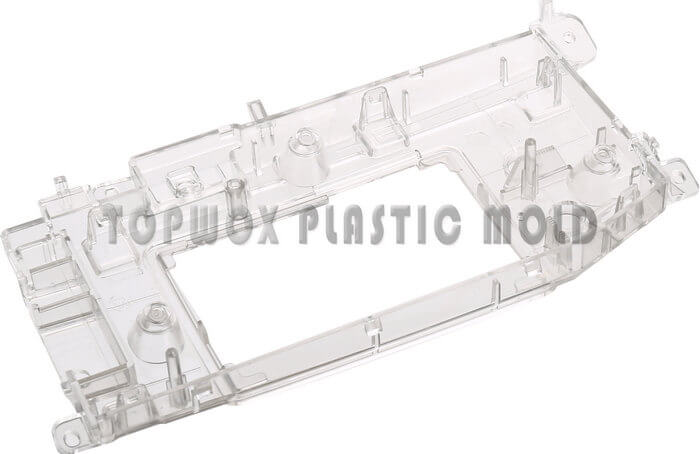Transparent parts have their special characteristics and functionality.
The poly-carbonate injection molding will inevitably be used for auto part. When injection molding, we often encounter some thick-walled transparent injection molded parts. For performance reasons, these plastic parts are made of PC.

When the average wall thickness exceeds 6mm and the MAX wall thickness is more than 12mm, the plastic parts often have two problems during injection molding:
one is that the surface shrinks, and the other is the air bubbles inside the product.
As to the thicker wall thickness, deformation is not the main problem.
Injection molding of transparent PC plastic parts has the most problems:
- Shrinkage
The main reason is that the wall thickness is too thick to lead to product shrinks. In this process, more melt must be injected to prevent shrinkage, and a higher mold temperature is required to shrink the product as a whole (opaque products require to reduce the mold temperature without worrying about the problem of vacuum bubbles).
The countermeasures for shrinkage are as follows:
1 Increase the number of gates on the mold and to increase the size of the cold slug well.
2 Slow down the injection speed, increase the back pressure and barrel temperature, increase the holding pressure and time, extend the cooling time, and raise the mold temperature.
- bubbles
There are two reasons for the bubbles: one is the gas in the melt, and the other is the vacuum bubble generated by the shrinkage.
The gas inside the melt is mostly due to the air and a small amount of plastic are decomposed. The solution is to fully dry the raw materials; while the vacuum bubble is more difficult to solve, the mold and the molding process need to be better.
[content_box title=”Tips for PC injection design”] Walls with a thickness of .012 to 1 inch were molded with PC. Ideally, the thickness should be between .050 and .375 inches. An 8-inch flow length can be achieved with a .125-inch wall and a .030-inch thickness.
It is possible for wall thickness to vary by up to 25% when blended properly. Between .140 and .160 inches, PC’s notched Izod impact strength decreases due to brittle failure rather than ductile failure.
Radiusing corners improves melt flow, which increases the impact resistance of notch-sensitive PCs. Ideally, the inside corner radius should be 60% of the wall thickness of the part.
A minimum radius of .020 inch is required. Generally, PC parts can be molded with draft angles between 12° and 1° on each side, but there are some exceptions.
PC is used to mold all types of projections. In order to prevent sink marks and molded-in stress, projection thickness should not exceed 60% of the wall thickness of the part.
Depressions. Proper molding conditions can ensure an acceptable appearance and tensile strength retention of 99%. Weldlines can cause 35% to 45% of the tensile strength of glass-fiber-reinforced PC to be lost.
Draft requirements and corner radius considerations for holes are also required. It is possible to eliminate pin deflection by limiting the depth of holes to two to three times the pin thickness. On a .125-inch-thick, one-inch-long PC part, tolerances can be as small as *.0025 inch.
For the same part, an acceptable tolerance would be ±.004 inch. For precision parts requiring a minimum allowable warpage, this material is frequently specified because it shrinks uniformly parallel and perpendicular to both the flow direction and the direction of shrinkage.[/content_box]
